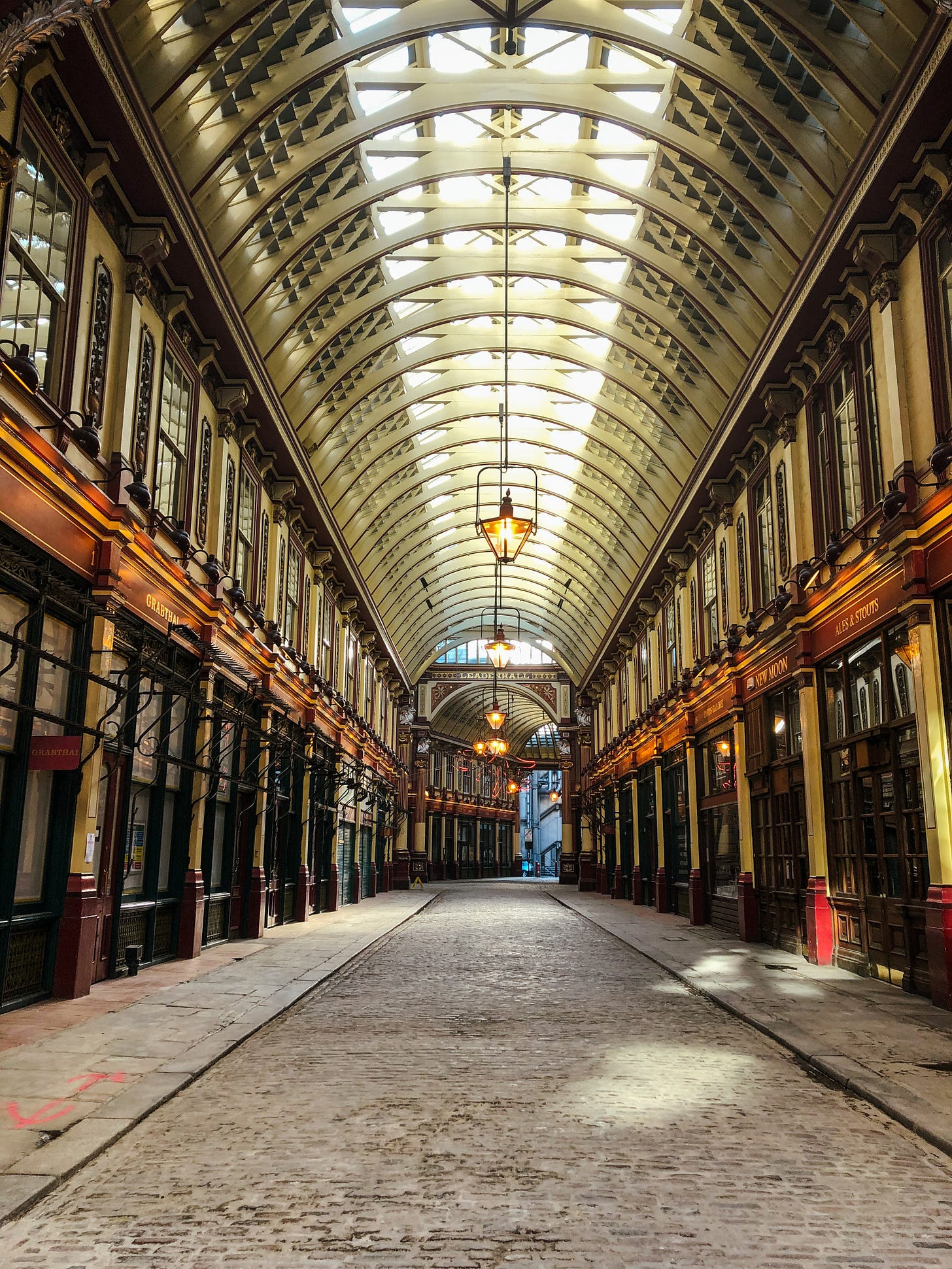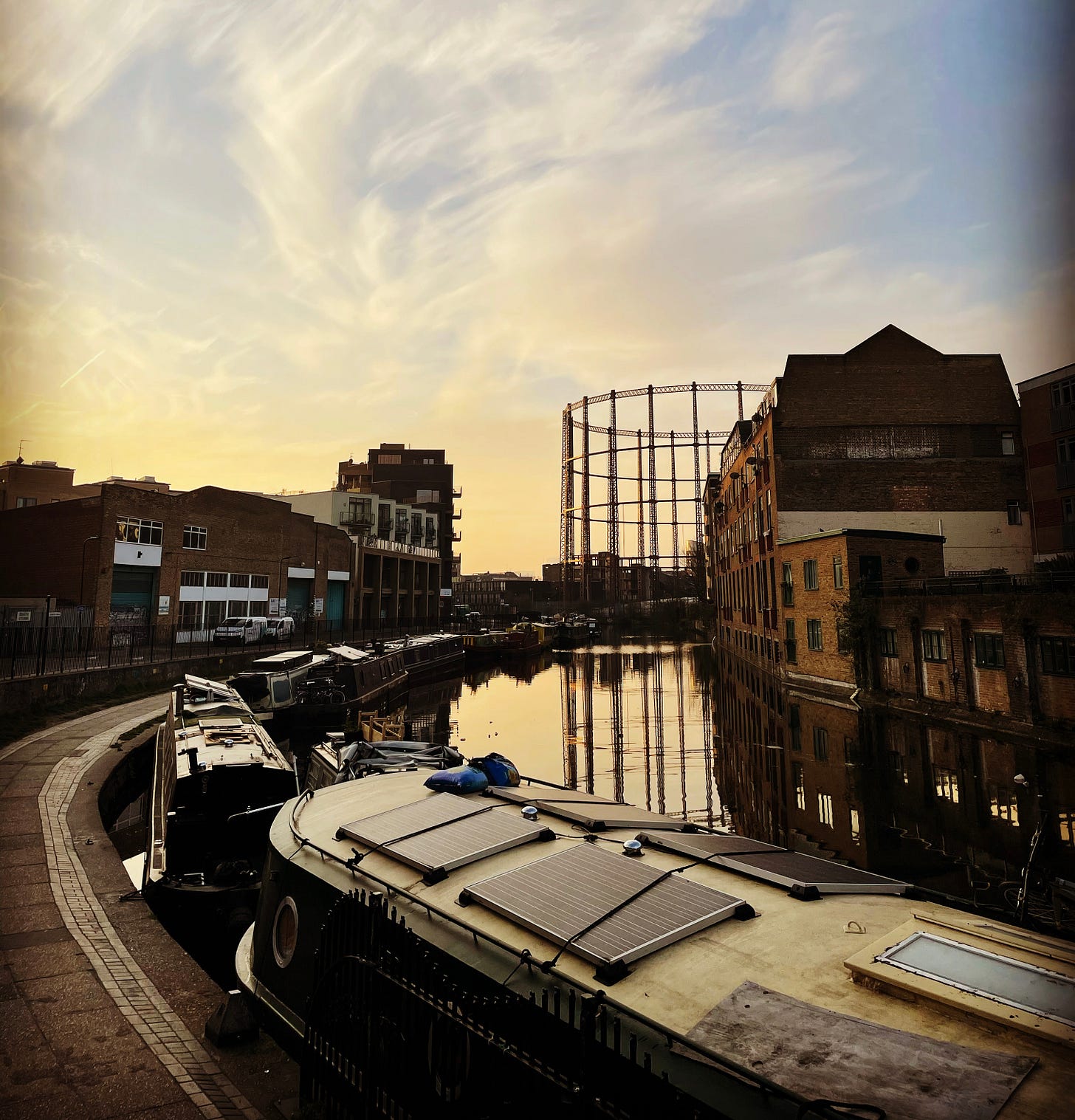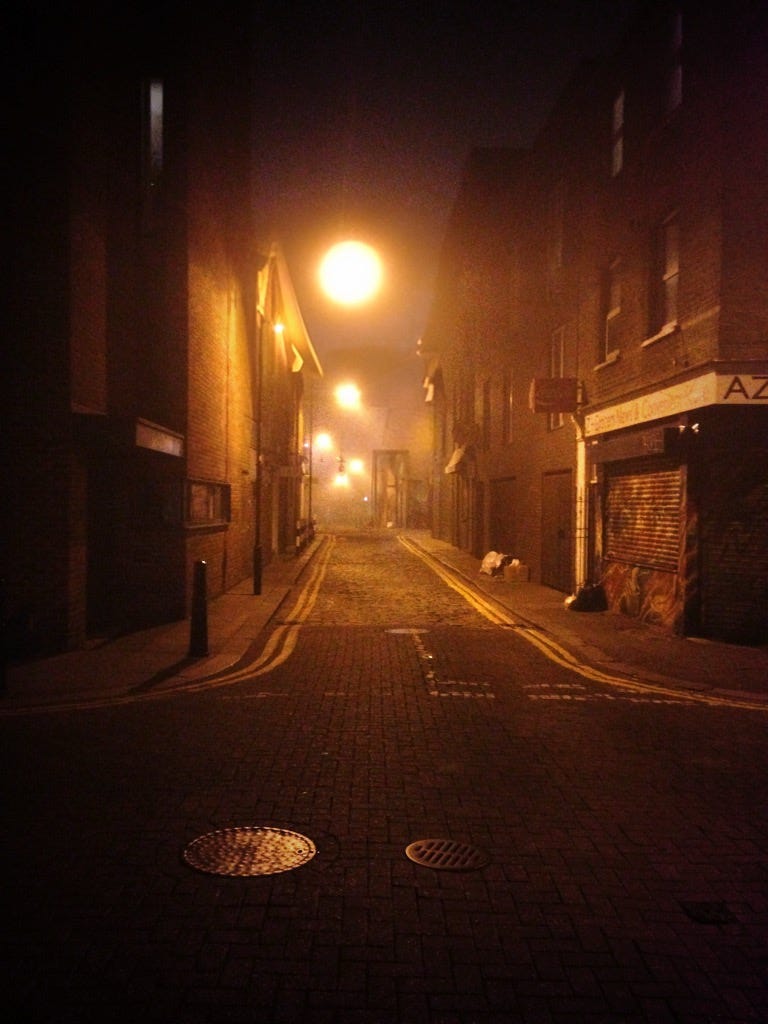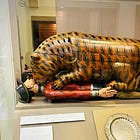Walking to create a sense of place
Immerse yourself in a city by taking a leaf out of Charles Dickens’s book
Hello walkers and writers 👋🏻
And hello to our new subscribers – it’s great to see you here. If you’re new to The Writer’s Walk, I’m Sarah – a brand writer and content designer – and I like to break up my screen and desk time with lots of walks. Not only does this help to boost my physical and mental health, it also inspires my work and writing. So in these posts I share an approach to taking a walk – I call it our theme – and pair it with a simple writing prompt.
In this edition we explore fiction writing and the importance of creating a rich sense of place.
Walking
The ability to bring a place to life in fiction – whether it’s imagined or inspired by a real place – is a skill that I think is underestimated. All too often, particularly as new writers, we focus on our characters or our plot and overlook the place where all that delicious action happens. And perhaps this is because, historically, novelists weren’t that fussed about describing places:
“The sense of place was a fairly late development in the history of prose fiction. As Mikhail Bakhtin observed, the cities of classical romance are interchangeable backcloths for the plot: Ephesus might as well be Corinth or Syracuse, for all we are told about them. The early English novelists were scarcely more specific about place. London in Defoe’s or Fielding’s novels, for instance, lacks the vivid visual detail of Dickens’s London.”
David Lodge1
Dickens’s descriptions of London are so vibrant you can almost see and taste the smog. Here’s how he brings Jacob’s Island to life in Oliver Twist:
“To reach this place, the visitor has to penetrate through a maze of close, narrow, and muddy streets, thronged by the roughest and poorest of waterside people… The cheapest and least delicate provisions are heaped in the shops; the coarsest and commonest articles of wearing apparel dangle at the salesman's door, and stream from the house-parapet and windows… he walks beneath tottering housefronts projecting over the pavement, dismantled walls that seem to totter as he passes, chimneys half crushed, half hesitating to fall, windows guarded by rusty iron bars that time and dirt have almost eaten away, every imaginable sign of desolation and neglect.”
Now, Dickens was a bit of a flaneur. He walked everywhere and not only paid attention to what he saw, heard, touched and smelled, but he also wove those observations into his imagination and, from there, onto the page. In his essay, Night Walks, Dickens talks about how he overcame a bout of insomnia by walking around London for several nights. During one of those walks, he went into an empty theatre – which would have been firmly shuttered and locked these days, but somehow was open to him on that night:
“With a dim lantern in my hand, I groped my well-known way to the stage and looked over the orchestra – which was like a great grave dug for a time of pestilence – into the void beyond. A dismal cavern of an immense aspect, with the chandelier gone dead like everything else, and nothing visible through mist and fog and space, but tiers of winding-sheets.”
Charles Dickens2
Blimey, that’s quite the piece of reflective writing, isn’t it? You can see the connection between Dickens’s writing style in his personal essays and in his fiction. There’s a richness to the language in his novels that I think comes from having walked the streets, lanes, alleys and interiors that inspired their settings, together with reflecting on his experiences in his essays.

Another aspect of place in stories is the narration and viewpoint, and how it can be used to bring it to life, together with showing readers how the characters perceive those places and interact with them. Drop two people into the heart of the same city and ask them what they notice and you’ll likely get two different perspectives because we all look at the world through the lens of our own experiences and values.
I think we can have some fun with that idea. So for our walk this time, I invite you to stroll around a city as if you’re a fictional character in a story.
Let’s say you’re Oliver Twist. How would you walk through the city? Slowly or fast? Head held high, or hung low? What sounds, smells and sights might you notice? How might they feel to you? Compare that with the Artful Dodger. How would you walk through that same city now? Would you notice the same sounds, smells and sights, or something different. How does it feel to be a different character walking in the same place?
You can also try this with the characters you’re working on. Choose two, and imagine you’re in their shoes as you wander around. Do you notice different things when you’re pretending to be different people?
Writing
Let’s put what we discovered on our walks into writing. And because we had two approaches to the walking, we can try two approaches to the writing:
Write a description of the place you explored in the voice and viewpoint of the famous fictional characters you chose
Do the same but from the perspective of, and in the voice of, the fictional characters you’re creating.
Remember to include sounds, smells and sensations, as well as what you, and your characters, saw, thought, imagined and felt.
Let me know how you get on – and if you fancy sharing your description, feel free to add it as a comment.
Happy walking and writing,
Sarah
Please support The Writer’s Walk
The Writer’s Walk is free to read but not free to produce. I thought about switching on paid subscriptions to help cover my costs, but I don’t want to put everything behind a paywall.
So I’ve set up a ‘tip jar’ on Ko-fi instead. If you enjoy the posts, please consider making a donation to help me cover the costs and keep the lights on at The Writer’s Walk.
There’s no obligation or expectation. Liking, commenting on and sharing always makes my day – and is a great way to show your support and help more people find it. Thank you 💚
More from The Writer’s Walk
Another way to find writing inspiration indoors is to visit a museum or gallery.
David Lodge, The Art of Fiction (1992), p57
Charles Dickens, Night Walks, p4, Penguin Great Ideas series





This post covers so many things that I think about because my research covers place and writing. But I haven't thought to put myself into a character while out for a walk so I'm going to try that! Thanks, Sarah!
Very inspiring, and I loved the quotes from Dickens. I will channel this into my own writing about my urban wanderings in my newsletter The Ambient City.